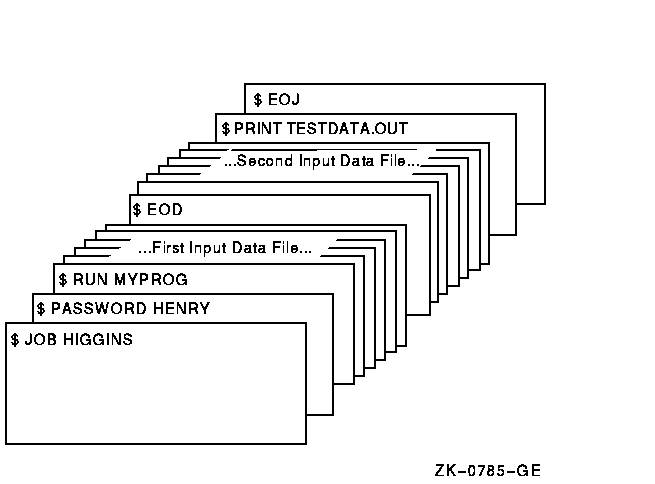HP OpenVMS DCL Dictionary
EOD
Signals the end of a data stream when a command or program is reading
data from an input device other than an interactive terminal.
Format
$ EOD
Parameters
None.
Description
The EOD (end of deck) command in a command procedure or in a batch job
does the following:
- Terminates input data lines that begin with dollar signs ($). The
DECK command indicates that the following lines begin with dollar signs
and should be interpreted as data, not as commands; the EOD command
indicates the end of the data lines.
- Terminates an input file if multiple input files are contained in
the command stream without intervening commands. The program or command
reading the data receives an end-of-file (EOF) condition when the EOD
command is read.
The EOD command must be preceded by a dollar sign; the dollar sign must
be in the first character position (column 1) of the input record.
Examples
| #1 |
$ CREATE WEATHER.COM
$ DECK
$ FORTRAN WEATHER
$ LINK WEATHER
$ RUN WEATHER
$ EOD
$ @WEATHER
|
In this example, the command procedure creates a command procedure
called WEATHER.COM. The lines delimited by the DECK and EOD commands
are written to the file WEATHER.COM. Then the command procedure
executes WEATHER.COM.

The program MYPROG requires two input files; these are read from the
logical device SYS$INPUT. The EOD command signals the end of the first
data file and the beginning of the second. The next line that begins
with a dollar sign (a PRINT command in this example) signals the end of
the second data file.
| 